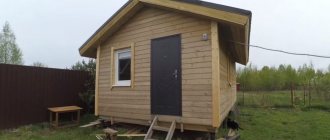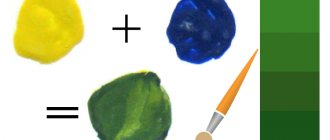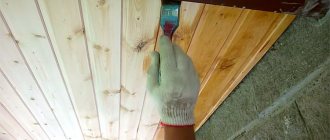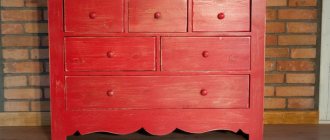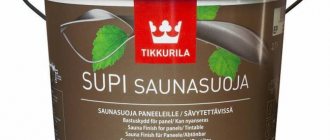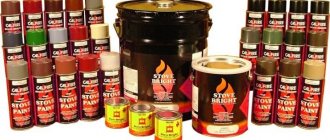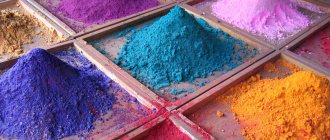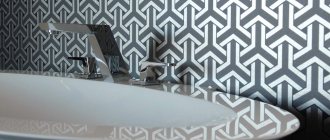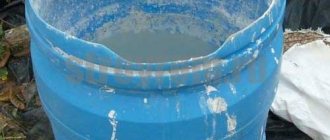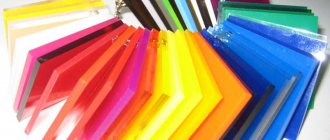When designing an interior design, the need arises to paint the ceilings and walls. When choosing a color scheme, preference is given to light shades. The most popular color is white. Thanks to its aesthetic properties, white lining provides solemnity and a cozy atmosphere in the room.
Types and features of lining
Nowadays, lining is often used for interior work. But decorating the space is done with different types of materials. They are:
- Quarter paneling. Each element is equipped with protrusions on the sides, which allows them to be overlapped.
- Simple. It is characterized by the presence of tongue-and-groove fastenings.
- With tongue and groove. The material is intended for mounting on walls and ceilings. It looks like a regular tongue and groove board, only smaller in size. The material is intended primarily for office premises.
- Eurolining. It resembles an edged board. On each side the fragments are processed with high quality. The tongue-and-groove system is used for connection. In the production of such lining, coniferous wood is used. Fungus or mold does not grow on this material, since there is a sample on the back of it that provides air removal.
- "American". This type of lining is characterized by an irregular rectangular shape. There is a groove in the widest part of the fragment, thanks to which you can achieve the effect of laying the parts overlapping.
- “Finka.” All elements have an oval shape.
- Block house. With its help, you can create an imitation of a rounded log from inside the room. To fasten the lining, sheathing is required. The material improves the heat and sound insulation of rooms.
You can use lining in a bathhouse, sauna, living rooms, and in the country. But if you are already tired of the natural color, then you can choose different paint options for decorating the surface. There are also substances that help protect wood and increase its service life.
Preparing the basis
Before you paint the lining white, you will have to prepare it. If you miss an important step in this process, the result will be below average, the paint may lie unevenly, the boards may soon begin to rot, etc. A step-by-step examination of the process will help you understand the nuances of this work and find out all the technical aspects of finishing with clapboard.
Cleaning the panels
First of all, you need to start by cleaning the surface of the panels from various types of contaminants. You can use sandpaper in this process. You should walk in a circular motion over the entire surface, from all sides. All irregularities and minor deformations will be removed in this way.
Panel surface treatment
Today, the painting process is not difficult, because there are special bleaching substances that will help you quickly and easily paint the lining with your own hands.
If there is already a layer of paint on the surface, then you should check how well it adheres. If there are any deformations or the paint has simply begun to peel, it is better to completely remove its layer from the panels.
Tip: If the paint sticks well enough, simply wash the surface with a soda solution (2%).
Apply protection to the surface
- If the process of processing the lining is completed, we proceed to applying protective compounds to it. First you need to putty the surface, the instructions will help you with this;
Important! For wooden lining, it is better to use a plastic spatula so that the surface remains undamaged during processing.
- After puttying, we treat the panels with drying oil. It will protect the material from negative chemical influences. To maximize the result, you can also add red lead to it;
- After the material has completely dried, we move on to the primer. This process will fix the putty and protect the material from changes in temperature in the room. The correct application of the primer layer can be seen in the video.
Advice! When choosing a primer, check the possibility of using a composition for painting.
The antiseptic composition is applied to the surface only after the primer layer has completely dried. Antiseptic substances help protect the lining from mold, moisture, as well as the appearance of fungus on their surface over time.
How is coloring done?
How to paint lining so that the effect is long and impressive? For such an event you will need a set of tools:
- Set of brushes and roller. If possible, then a spray gun.
- Tray. To make it easier to pick up paint.
- Protective and decorative compounds.
- Sandpaper, stiff brush.
- It is better to have a stable stepladder and glasses to protect your eyes.
Using a spray gun allows you to quickly complete the work of painting the lining.
Painting consists of several stages. It is much more difficult when work is carried out on an old coating. Then it becomes necessary to remove the old decorative layer and clean the surface well.
Stage one - preparation
Purchased products are checked for possible damage and deformation. It often happens that materials are purchased that belong to a lower class. They require a long preparation - they are processed with sandpaper, and the cracks are covered with wood putty. If there are dark spots on the surface, then bleaching is performed.
If the material has defects in the form of cracks, they are eliminated using putty
Stage two - primer
It is necessary to cover the front side of the lining with priming compounds. This will reduce the consumption of other solutions, increase adhesion, and will also prevent the elements from being subject to deformation
In this case, special attention is paid to the knots; they are literally impregnated to eliminate the possibility of falling out if drying occurs
The primer improves adhesion when painting lining
Stage three - impregnation
Now protective impregnations are applied. These are fire retardants and antiseptics. Impregnation is carried out over the entire surface. Do not allow unpainted areas to remain
It is important to consider that such products should not have any foreign (pungent) odors or change the color of the wood.
When applying protective impregnation, it is necessary to ensure that no untreated areas are left.
Stage four - coloring
How to paint lining inside a house? This procedure begins only after the material has dried well from previous manipulations. The process is:
- The paint is prepared in advance. The solution must be well placed, because at the bottom there may be sediment, which includes the main components.
- A small part of the composition is poured into the tray if a roller is used. It is better to provide a container for the brush that is easy to carry. Using a spray gun makes the work better, and the paint is poured into a special container.
- It should be taken into account that movements are performed along the fibers of the material. You can’t stay in one place, the coating should be uniform.
- Several layers are applied, this will provide an excellent decorative effect.
To obtain a good decorative effect, the paint should be applied in several layers.
Still, how to cover the lining? This question is quite complex, the answer to it depends on many factors that are calculated purely individually. But it must be taken into account that if the composition is used over large areas, then it must ensure the “breathing” of the material.
We place bright accents
White country style bedroom with bright floral motifs
Bedroom design with white furniture requires dilution with bright interior items. The following can be used as bright accents:
- not basic furnishings;
- textile;
- decorative items, accessories;
- lighting.
A chest of drawers, bedside table, or coffee table in contrasting shades can be an excellent decorative addition to a white bed or closet.
A creative combination of white furniture and unusual decor in the form of a transparent light curtain and bedspread with pillows in the same color scheme
The easiest way to create interesting combinations is with textiles. The designer's work includes bright pillows and bolsters, a blanket, a bedspread, a rug, contrasting bed linen, curtains and fabric roller blinds.
Mirror and glass objects are welcome in a modern interior. This could be a large mirror in a stylish frame, glass shelves, crystal figurines and vases.
Books with the same cover, panels, a composition of family photos, modular paintings will also perfectly complement the design of a bright room.
Unusual decorative elements that complement the white bedroom and make it stylish and organic
When choosing decorative items, it is important to pay attention not only to the color combination, but also to compliance with the overall design idea. Don't get carried away with the design. The main goal is to create a feeling of spaciousness and freshness, and an abundance of decor can spoil the original goal
With proper placement of accents, white furniture will stand out nobly
The main goal is to create a feeling of spaciousness and freshness, and too much decoration can spoil the original goal. With proper placement of accents, white furniture will stand out nobly.
The small bedroom is made in white tones with elements of a soft mint color, which makes the atmosphere homely and cozy.
Many people are afraid of light shades in the interior because of the sterile effect they create, or because of its impracticality in terms of maintenance. In fact, it is no more troublesome to operate than any other. By discarding stereotypes, you can realize the most daring design idea. In a modern style, white furniture will add freshness and simplicity, and in a classic style - sophistication and elegance. Correctly placed accents will set the desired atmosphere of warmth and comfort.
Preparing for painting
Before covering the lining with varnish or acrylic, it should be cleaned of dirt and degreased with an alkali-based solution, and then sanded with a flat pumice stone or a grinding wheel. This will require the following tools:
- sponge and brush to remove dirt from the surface;
- roller, brush or spray for applying restoring and brightening agents.
This operation leads to the loss of all the protective characteristics of the wood. To restore them, treatment with a disinfectant composition is necessary. It will not only protect the wood, but also improve the quality of the varnish coating.
How to paint lining correctly
Using regular oil paint to renew the surface gives it an artificial shine and hides the natural grain of the wood. In addition, such coating is short-lived and will soon require modernization. When using acrylic varnish on wood panels:
- the original pattern is preserved;
- ensures attractive appearance;
- creates lasting protection from moisture and weather changes;
- the service life of the cladding is extended (up to 8-10 years).
Depending on the degree of darkening, you can use the concentration of the solution as prepared or dilute it with water in a 1:1 ratio. To avoid differences in the tone of the coating, it is necessary to apply a test stroke in an inconspicuous place. After this, the paint color is selected.
The recovery procedure consists of step-by-step operations:
- surface cleaning;
- drying wood;
- antiseptic treatment;
- testing and selection of shade;
- applying acrylic paint.
The final finishing with clapboard is quite often used in the repair of balconies and cottages. In order for the cladding to maintain a beautiful natural appearance for a long time, you need to follow the rules for using wood material and know how to lighten it. To ensure high-quality restoration of darkened panels, you should choose the right bleaching method. For this purpose, it is advisable to consult with specialists or read the instructions.
How to paint the lining on the balcony: the choice of paints and varnishes and the technique of applying them
The lining is very popular. It is used for finishing the facades of buildings for various purposes, as well as interior spaces. This material is often used to decorate balconies and loggias. However, it should be noted that this natural material requires special care. That is why it is necessary to carefully consider how to process and how to paint the lining on the balcony.
This is a natural finishing material made from wood. The lining covering, especially on the balcony, requires protection from the aggressive influence of the external environment. For example, it could be fungi, ultraviolet radiation, high humidity, and more.
One of the protective measures is painting. It also performs a decorative function. Depending on the design objectives, painting will help highlight the natural texture of the wood or, conversely, hide and integrate the decoration of the walls and floor of the balcony into the overall interior of the apartment.
The lining on the balcony is usually processed using the following means:
- moisture-protective compounds; various types of antiseptics: transparent and translucent, film-forming and impregnating; paints: dispersion and oil; all kinds of varnishes.
How to properly paint the inside of the lining: technology
To paint lining in “dry” rooms inside the house, you can use any type of paint. Here you simply decide on the requirements for the decorative appearance of the surface. If the lining is dry, it can not be impregnated with protective compounds, or you can choose paint/varnish/wax with appropriate additives. You can paint it only on one side, leaving the back side untreated.
Paint each panel of the lining separately
If the lining will be used in damp or unheated rooms, on a balcony, it must first be thoroughly impregnated with protective compounds on all sides, maybe twice. Only after the impregnation has dried can it be painted, varnished, or, in general, given decorative properties. Another point: when installing the lining on a wall or ceiling, it has to be cut into pieces. Places of cuts in damp rooms must also be coated with the composition. It is not necessary to wait until it dries, but it is necessary to process it.
There is one very important nuance that many amateur decorators overlook. If you want to get a professional-level painting of the lining, you need to process each board separately: sand, paint, dry, and only then assemble the surface from the already painted lining. That is, mount already fully processed boards on the wall or ceiling. Only with this approach will the surface of the lining have the same color from any point.
It’s difficult to paint the entire surface of a clapboard wall well
If you paint an already assembled surface, unpainted areas remain in the grooves and recesses, making it difficult to sand large areas. You definitely won't get a perfectly flat surface. The quality of finishing in this option is not above average. It is permissible to paint a finished surface if you are renewing the paint job. This must be done at different intervals, depending on the operating conditions and the properties of the paintwork material.
Correctly, the painting technology looks like this.
- The lining is checked and sorted. All bent, bent or cracked boards are rejected. They can be used to test color, select color, number of layers, practice technique and painting sequence.
- Boards that have been sorted are sanded until completely smooth. It is most effective to work with a sanding machine, but you can also use a block with sandpaper attached to the surface. Sandpaper grit - 250-280. When grinding, circular movements pass through the face, tenon and groove. The back part of the lining can be left without treatment. It is more convenient to work with a grinding machine
- Apply the composition with a roller or brush. Each type of coating has its own points and features - they are written on the can or in the accompanying instructions. In general, the rules are simple: take a little paint and apply it in single strokes along the entire length of the lining. Then rub thoroughly and shade until a uniform color is obtained.
- Having achieved uniform coloring, leave to dry.
- After drying, sand again if necessary. This step is often necessary when working with opaque paints and varnishes. The first layer of paintwork raises the pile of the wood, which is why it becomes rough in places. This pile is removed by repeated sanding.
- The second layer of paintwork is applied. Drying.
There can be many layers: it depends on the hiding power of the paint and on what effect you want to get. But in any case, one rule remains: there should be little composition on the brush. The exception is impregnation or primer. They are applied with a well-moistened brush, but only those without pigment. When applying pigmented protective compositions, the rules for paints apply - the minimum required amount of the composition is well shaded.
Sometimes, even with careful rubbing of the paint, stains are clearly visible. This is not a bad paint, but the properties of wood: in some places the pores absorb better, in others worse. In order to achieve an even color in this case, the surface is first primed. You can use any wood primer or colorless matte varnish (can be water-based). After drying, the surface is sanded (yep, again) and then the required number of layers of paint are applied. Only in this case, after the first layer of paintwork, grinding is rarely required, and if necessary, then in some places, more often on a tenon or groove.
Watch the video to see how to evenly apply glaze, oil or wax.
If furniture quality painting is required, there are even more layers: first a stain is applied, then two layers of primer. After drying, the surface is sanded until the surface is completely matte, first with grain 280, then 320, after removing the dust, a finishing layer is applied - varnish. An example of such work is in the video.
Design
Many home owners prefer not to paint the lining and preserve the natural pattern. But in order to prolong the original appearance, the wood should still be treated, otherwise the walls may darken or acquire a blue tint. To get rid of the gray tint on wood, you will first have to sand the top layer, and then treat the surface to protect it from sunlight.
It will be more difficult to remove the blue tint - for this you need to use biological agents. Chlorine and active oxygen will help cope with the task. After treatment, the surface must be impregnated with a protective composition, and then painted with thick or translucent paint.
Natural wood shade will not harmoniously complement all interiors, so the walls can be painted. A large selection of painting methods allows you to create an exclusive coating
To do this, it is important to choose the right paint color. Don’t forget about simple rules: light shades visually expand the space, while dark shades, on the contrary, make the room smaller
Below are some recommendations and tips to help you choose the right color.
Warm and calm shades look great in the kitchen interior: yellow, orange, pink and peach.
- A honey-golden shade combined with a natural wood pattern looks great in the living room. The interior can be diluted with light shades or bright and catchy colors.
- For the office, you can choose natural wood colors. In this case, oak looks great, but the lighting in the room must be well thought out. Cool tones will also help you get into a working mood.
- In the bedroom it is better to use wood shades or light and neutral colors. White also looks great when decorating the walls in the bedroom.
- You can use any colors in a nursery, but psychologists advise against bright and saturated tones - it is better to choose calm and moderately bright shades. They will not only create a special playful mood, but will also help the child relax and get ready for sleep and rest.
- Lining painted gray and blue will create a feeling of dampness and cold, so it is wiser to use such shades in sunny rooms.
The lining can be mounted in various ways.
- Vertical. Will allow you to visually raise the ceiling. This technique is especially good to use in combination with light shades.
- Horizontally. Helps visually lengthen the wall and create the effect of expanded space.
- Diagonally. It will create special dynamics in the interior and allow you to make a spectacular accent on the wall or ceiling.
- Alternating. Allows you to create a special charm with a simple technique. For example, you can depict various shapes on the wall: a herringbone, steps and other combinations that the homeowner’s imagination can create.
Secrets of decorative wood staining: techniques and tricks
City dwellers want to preserve the natural color of wood as much as possible. For those for whom wood in the house is a boring everyday thing, paint the interior lining in some unusual color. Modern paintwork materials allow you to achieve different effects. For example, textured or brushed lining, but in two colors. This technique is often used in loft style interiors.
Brushed lining in two colors is an excellent choice for decorating walls
The trick is to apply two layers of different colors. The first layer is a dark color, the second is a light or brighter color. After playing with colors and the order of their application, you can create your own version. Watch the video - how to get lining brushed in two colors.
Painting in two colors may not be the same. You can make the recesses a darker color, and only slightly tint the face (front part) or do everything exactly the opposite. The result is a striped wall made of clapboard - the effect of a slatted wall.
Conclusion
We have discussed these issues in detail:
- The rules of know-how include painting white and ordinary colors;
- In materials reasonably suitable for the task;
- In a step-by-step work scheme.
Let us honestly hope that you will actually need all the information provided, and painting the lining at your summer cottage or at home will be immediate and easy. Well, if you want to learn a lot more, we recommend watching the video in this post - the video is interesting and informative!
How to properly prepare wood?
Before applying paint and varnish composition to wood, it must be prepared.
Drying the panel
On raw wood, the maximum service life of paint and varnish coatings rarely exceeds 2 years, and more often it is even less than 1 year. Therefore, the lamellas must be kept outdoors or indoors, the humidity of which is more than 15% for up to 30-40 days. It is advisable to avoid direct sunlight, which will lead to uneven drying.
Deep penetration antiseptics significantly speed up drying.
You can check the humidity level like this:
- cut a square of 0.4x0.4 m from polyethylene;
- wrap the panel and secure it tightly with tape;
- maintain in this state for a day in room conditions;
- measure the moisture content of polyethylene from the inside.
An oilcloth that is wet to the touch indicates that the panels have not dried sufficiently.
Processing of lamellas
If materials are category B, then they must be sanded. To do this, use a power tool or regular wood sandpaper. In this case, the last stage should be carried out with finishing fine-grained sandpaper. This is done to level the surface of the lining in the area of knots, various inclusions, and differences.
Tip You can process the wood after attaching it to the wall with a sander or an abrasive nylon brush.
here
Applying primer
The essence of treatment with this composition is the creation of a dense layer on the surface of the wood, which binds dust, eliminates small specks after sanding, and reduces the porosity of the material. Adhesion increases, and paints and varnishes gain stronger adhesion.
An additional advantage will be the fact that after such surface treatment, paint consumption is significantly reduced. Therefore, you can purchase more expensive and high-quality compounds.
The following types of wood primers are used:
- based on epoxy resin;
- based on silicone and acrylic;
- acrylic.
You only need to choose a special composition for interior decoration; for this you need to make sure that the packaging has the appropriate markings.
Materials and tools
In addition to white paint, we will need a primer, wood bleach, white spirit, a roller, a brush, a container, and a tray for rolling out the roller. You will also need protective masking tape if you want to do everything as carefully as possible. Do not neglect personal protective equipment. Goggles, gloves, and a hat will come in handy. Clothing, of course, should be selected taking into account that paint may get on it.
Materials for interior painting
When selecting the necessary tool, it is necessary to take into account that before painting the surface must be treated with anti-rot compounds. With this in mind, you should stock up on the following materials:
- Coarse sandpaper to clean the surface from dirt and foreign matter. This is especially necessary for lower grade linings, the technical conditions for which require the presence of resin pockets - if they are not cleaned out, the painting will not be of high quality.
- Set of painting tools. In addition to the traditional flat brush, you also need a wool roller, a bucket, and a spray gun/spray gun. For tall rooms, a stepladder may also be required.
- Safety glasses and a gauze bandage - if it is impossible to work in a well-ventilated area.
- For priming and antiseptic treatment, it is better to have a separate set of painting supplies, since it is not known in advance how dissimilar coatings will interact with each other.
Primer before final painting
Before repainting the lining, it is necessary to pre-prime the entire surface. Typically, the same product that will be used for the finishing coat, diluted in a lower concentration, is used for this. One coat applied with a brush, rollers or spray will be sufficient.
Chemical cleaning
The simplest and most reliable way to remove contaminants is to use liquid chemical compounds. They are evenly applied to the surface to be treated according to the instructions, and after a while they are washed off along with the dirt. Highly concentrated preparations contain alkaline components that promote rapid removal of soot from surfaces without damaging the wood structure.
To quickly clean walls and floors, you can use a mop with a telescopic handle.
No less effective in the fight against soot are chemical sponges impregnated with deep penetration substances. They contribute to the quick and safe removal of the smallest particles of soot and soot that have penetrated the wood structure.
The principle of working with sponges is quite simple: holding the sponge with one hand, clean the surface from top to bottom.
Finally, it is recommended to wash the cleaned surface with clean water and wipe dry with a soft cloth. This is done as follows: the floor is covered with film or oilcloth to protect the surface from further contamination.
Next, clean water is poured into the container, to which a detergent composition, for example, for washing dishes, or any other degreasing agent is added. The soot is washed off with smooth movements using a soft sponge.
Impregnations
- The easiest way to protect wood is stain impregnation. For its budget price, it is quite effective. After high-quality impregnation, the wood will successfully resist rotting processes, mold and fungus formation. True, the color range of stains is not particularly diverse. For external treatment, a special stain is used, which contains additives that prevent the paint from fading.
Some useful tips
If we are talking about painting the lining inside the house, then it would be useful to read some useful tips that will definitely help during the work.
In order to ensure uniform distribution of color on the surface of the lining, it is necessary to thoroughly mix the paint before work. This can be done using a metal rod or a wooden stick. The main thing is that the material is clean.
In order to be sure that the paint is really chosen correctly, before starting work it is worth making a preliminary touch on the surface. Only after this can the main body of work begin.
The most convenient way to apply paint to the lining is with a brush; this will help paint the surface more evenly.
It is best to paint the lining not with a spray gun or roller, but with an ordinary brush. At the same time, apply paint to the surface evenly.
The primer should be the same color as the paintwork. You can make it this way by adding a bit of paint to it before priming.
If the room is too hot, painting is not recommended. In this case, the paint will dry too quickly. This cannot be allowed. It will not adhere too well to the surface of the wood. When it comes to painting, it is better to create optimal conditions for this process. The room temperature should be between 20 and 25°C.
You need to carefully approach the processing of the ends of the lining. To do this, it is necessary to apply a primer on them in several layers, and also apply a paint coating in several layers.
If there is a lot of paint left on the edges of the can, it needs to be collected using a scraper. If it is not there, then you can use an ordinary sheet of iron folded in half.
The paint must be applied with a brush in several layers. The layers should be thin. It is best if there are three layers on the surface. In this case, the lining will be well saturated with paints and varnishes.
What to process?
There are many types of paints and varnishes for wood on the shelves of construction stores.
You need to pay attention to the recommendations of manufacturers of finishing compounds
The most popular paints:
- Enamel. Easy to apply, forms a durable shiny film on the finishing surface. Suitable for painting lining in country or country houses.
- Glaze. Sold in transparent form, can be painted over with special colors. This coating is pleasant to the touch, beautiful to look at, and reliably protected from moisture.
- Alkyd varnish. Has good resistance to temperature fluctuations and high humidity. But flammable, long-drying.
- Acrylic aqualac. A water-based composition that dries very quickly, creating a stable, reliable coating with excellent decorative characteristics. When finishing, it does not emit unpleasant odors, since it consists of environmentally friendly components.
- Acrylic paint. Provides wood with a coating that protects the material from moisture. The compositions can retain their original shade for a long time, while they are odorless and quickly harden after application.
- Oil paint. This paint and varnish material is rarely used for interior decoration. Despite all the advantages and useful qualities of the coating when processing wood, it emits a sharp, unpleasant odor. Another disadvantage is the long drying period.
- Water-based paint. It is characterized by quick drying, no odor, and easy application. Without hiding the texture of the fibers, the composition gives the material a noble white tint.
Important When using some types of paint, for example, water-based or aqualac, additional treatment of the wood with oil is required. This will give the material the necessary protective properties from moisture. How can you coat wooden lining inside a house, says a specialist in paint and varnish products:
A specialist in paint and varnish products explains how to coat wooden lining inside a house:
Types of painting materials
How to paint the lining? Answering this question can be quite difficult. The fact is that there are many compositions that differ in their characteristics. Their correct use can transform the room or, conversely, ruin the entire appearance.
Protective compounds
These solutions act as protectors, but can provide a certain decorative effect.
Fire retardants
It is necessary to coat products with such a composition that are located in places where fire may occur. Of course, it is better to impregnate all wooden materials used in finishing work.
Antiseptics
Substances that eliminate the threat of various types of bacteria that contribute to rotting and destruction. This solution is perfect when you want to leave the material unchanged. The composition will protect the product for a long time, so it will not require additional painting.
Antiseptic protects the lining from various bacteria
Lucky
In fact, varnishes are already closer to paint compositions, but they have a good protective function. Painting the lining inside the house can be done with different materials:
Acrylic lacquer. Great for all interior spaces. It can be transparent or translucent. If necessary, the substances can be tinted.
Synthetic materials
This option requires caution. At dachas they cover the rooms that are located at the entrance to the house.
It is quite easy to work with varnish compositions, you just need to take into account that to achieve a better result you need to apply them in several layers.
Varnish allows you to protect the lining from rotting, damage and destruction
Decorative options
Paint for lining is the best way to transform a surface that has already served for a considerable period of time. That is, if over time the product began to darken, cracks appeared in places. In this case, it is best to apply paint. As a result, you can completely renovate the interior of your country house and bring to life ideas that will help with this.
Painting the lining is one of the best protection options, which also performs a decorative function.
How to cover the lining? It should be taken into account that different types of material can be used for work.
Oil paint
It is considered one of the most popular substances. This option has been used for many decades. This is because the solution has excellent characteristics. They consist in the fact that the composition penetrates deep enough into the upper layers of wood, ensuring its long-term preservation. The coating retains its properties for 7-10 years.
Some disadvantages cannot be excluded:
- The material has a rich chemical smell that takes a very long time to dissipate.
- The first point leads to limiting the dyeing time. That is, it is not possible to work in winter, because thorough ventilation is required, which can defrost the entire country house.
- The protective property of paint is fraught with another drawback - the material firmly clogs the pores of the wood, it stops breathing. This means that the microclimate, which is especially valuable when using lining, will be spoiled.
Therefore, this composition is used extremely rarely for interior work.
Acrylate paint
It should be immediately noted that this type is very similar to acrylic compositions, but has a lower price and the necessary characteristics.
This coloring option has the following properties:
There is no unpleasant odor that requires long-term ventilation. The coating is much more elastic, which increases service life. It more successfully withstands aggressive external environments
This is very important, because many country houses are left without heating during the winter. The surface remains breathable, which allows you to maintain exactly the atmosphere that is inherent in wooden structures. The work is done much faster and easier.
Acrylate paint allows you to create an elastic, breathable coating
Of course, such material costs a little more than oil paint, but the result exceeds all expectations.
Acrylate paint for woodwork
Why is the lining painted white?
During operation, lining made from any material loses its properties. Dark spots, various dirt and scratches appear on the surface of the panels.
Temperature changes lead to irreversible changes in the structure of the material. Negative natural and climatic factors (precipitation, wind, sun rays) lead to the gradual destruction of the material.
To protect against harmful factors, the panels are painted with various compositions. Many colors are used for painting.
When decorating the interior, preference is given to white. White lining has several advantages:
- Suitable for decorating any interior;
- Increases the visual dimensions of the room;
- Improves the mood and solemnity of the atmosphere;
- Pairs perfectly with other shades and textures;
- It remains fashionable and in demand at any time.
- The disadvantage of white color is increased soiling. White products require special attention and care.
Choosing paint for painting
In most cases, we are talking about painting internal surfaces, and the type of paint is selected accordingly - acrylic, water-based or oil-based (white).
The advantage of acrylic paints is their environmental friendliness and comparative cheapness. Oil paints dry faster, but at the same time they emit a specific odor that is not always acceptable to others. Water-based paint, for all its non-toxicity, is still inferior to the other two types in terms of coating durability. Therefore, the use of a certain type of paint is determined by the specific conditions of its use.
Recently, scuba paints have been actively used for painting linings, previously used mainly for painting ceilings. The advantage of scuba tanks is that, while forming the color of the surface, they also form a dirt-repellent layer. Therefore, caring for the white panels, which were decided to be painted with aqualac, will be much less labor-intensive. The downside of scuba gear is its high cost.
APPLICATION OF PROTECTIVE PRODUCTS
After surface treatment, it is necessary to apply protective agents.
- Putty the lining, choosing a special putty, the packaging of which has a note that it can be used to process wood.
Tip : Metal spatulas can damage the surface, so use a plastic spatula instead.
- To protect the lining from external influences, it is necessary to apply a layer of drying oil, into a jar with which you should add dry pigment (about 50 g) to enhance the effect. For example, mummy ocher, red lead, etc.
- Prime the surface when the drying oil is completely dry. The primer protects the coating from temperature changes and secures the applied putty.
Tip: Not every primer is suitable for painting, so before purchasing, check which primer you should choose.
Varnishes for tinting lining
If a bright, white shade does not suit the chosen style, you can paint the lining ceiling with a dark stain or tint it with varnish. Mixtures are divided into several types:
- Acrylic-based scuba tanks are considered safe for health and form a durable, elastic film.
- Alkyd varnishes paint wood with high quality, adding resistance to moisture and climate change. But such mixtures take a long time to dry and are considered flammable.
- Decorative glaze compositions are transparent pigmented mixtures that highlight the texture of wood. There are neutral glazes on sale, to which you can add any liquid pigment.
The best solution is tinting stains. In addition to imparting a noble shade, stain will favorably emphasize the texture of the lining. In addition, this is impregnation, which means that a film will not form on the surface of the lamellas, and the wood will remain vapor-permeable. There are lightly and highly pigmented stains - the number of layers applied to give the decor the desired shade depends on the choice.
